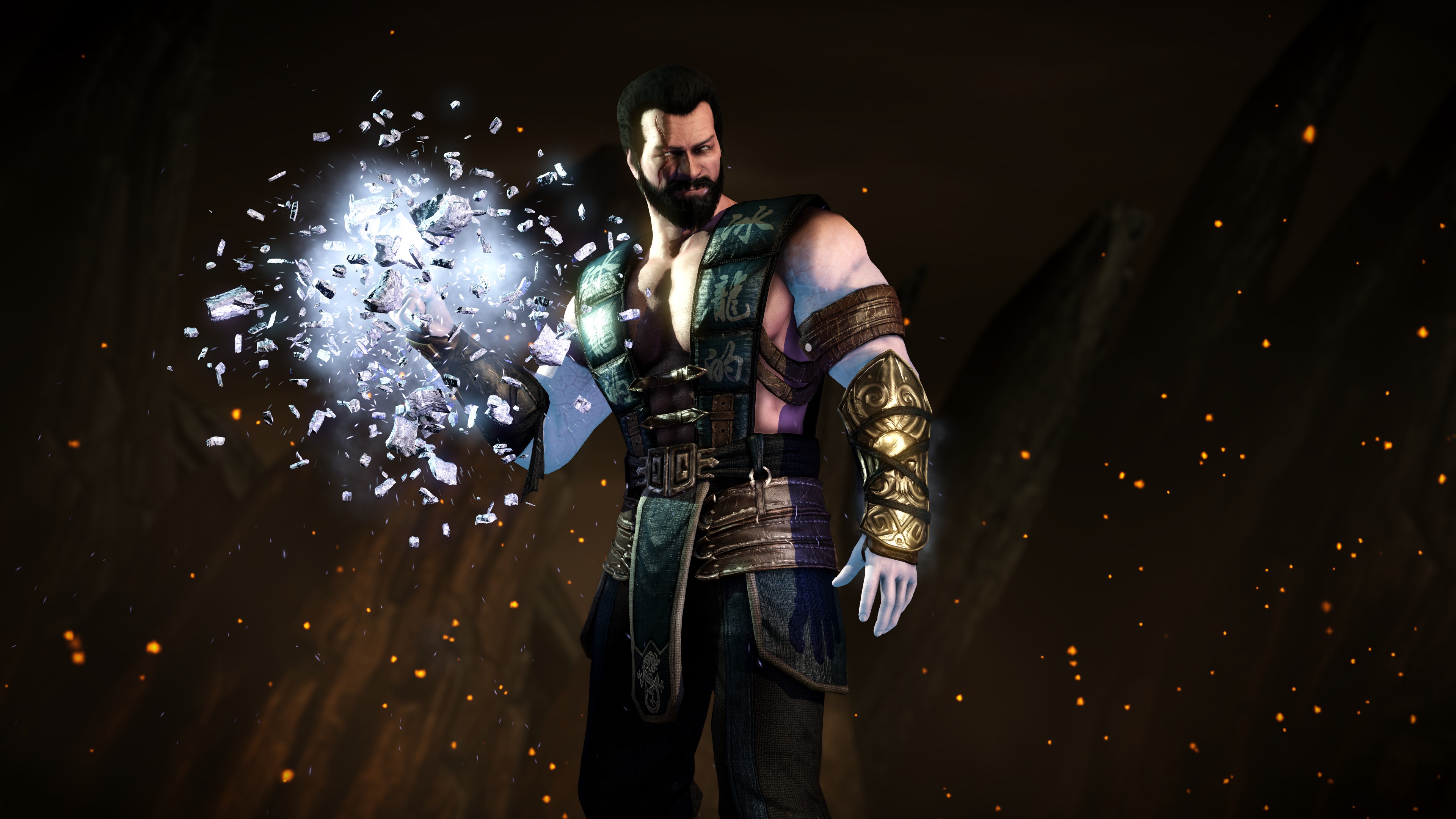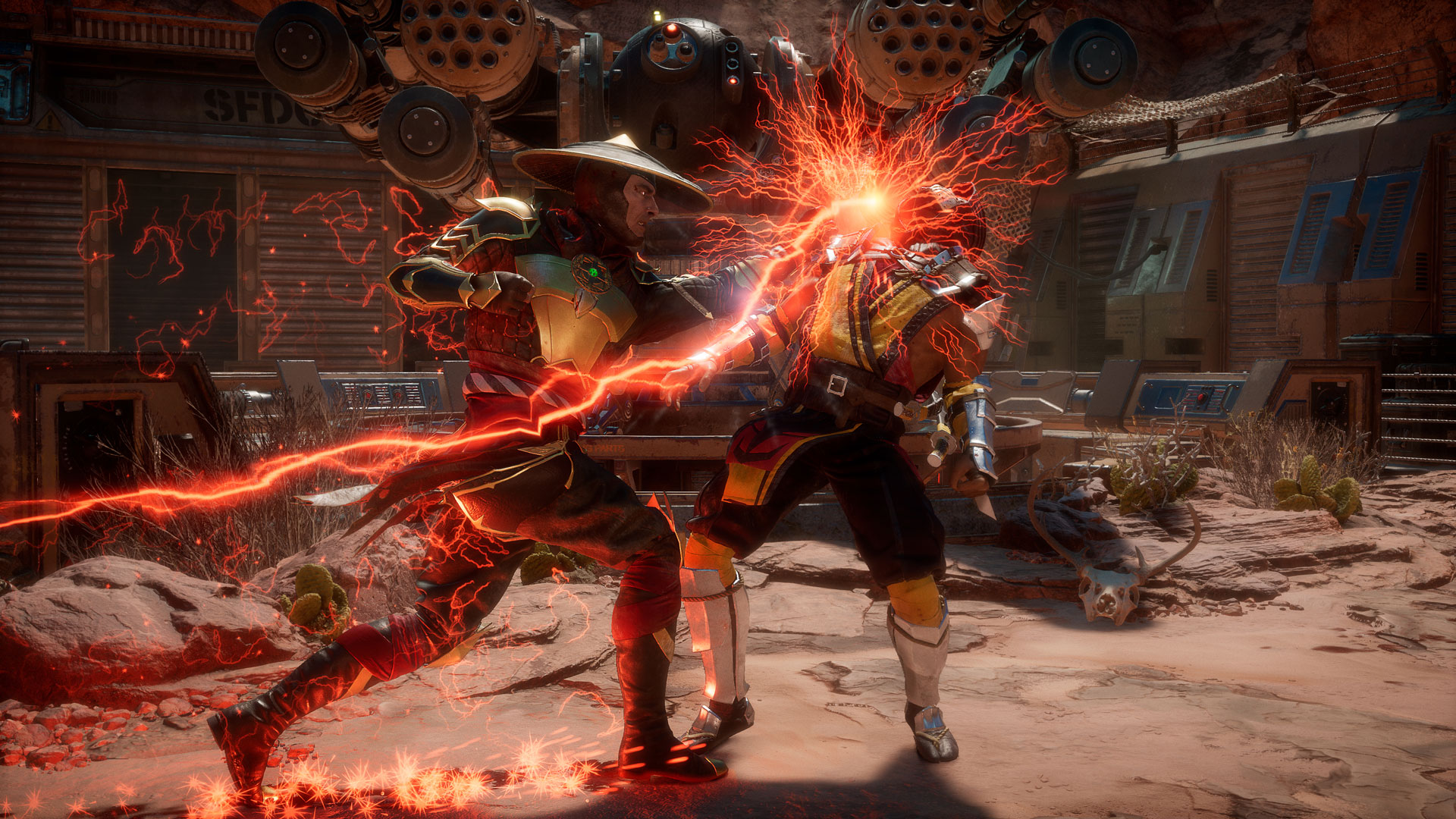For decades, Mortal Kombat has been a staple series of the fighting game genre. Its had a rollercoaster ride of hits and misses, but its most recent entries have not only revived the dwindling franchise but have made noticeable impacts on their contemporaries.
Mortal Kombat 9 changed the way we thought about how fighting game story modes should look and feel. It rewrote the rules of how we can come to understand linear plots in a genre with so many protagonists and angles to tell a story from, while also rewriting its own lore to make it more digestible. In Mortal Kombat X, the series’ art direction was more inspired by realism, aging long-tenured characters in believable ways, and taking strides to desexualize the lens in which we saw many of the games female characters through.
I remember reading backlash from that move in particular. The idea of covering up characters who’ve been elevated as sex symbols by much of the community was met with a sort of now predictable protest that seemed new in 2015. Regardless of the fact that Sonya Blade was now a Special Forces General and a mother, some of the community’s more incessant elements just couldn’t understand why she’d choose tactical gear over a wet t-shirt. I didn’t know that it was something I would have asked for prior to MKX’s reveal, but once it happened, I realized that it was a long overdue necessity.
Mortal Kombat 11, NetherRealm’s next entry in this new set of stories about the endless war between Outworld and Earthrealm, manages to have that very same effect on me for something much more near and dear to my heart, ethnic diversity. Seemingly forever, Mortal Kombat hasn’t been shy about how heavily influenced it is by Asian culture. But that influence, after any scrutiny, can look a lot like appropriation.
 Influence vs appropriation has been a constant conversation point over the last couple of years, and it’s one that Mortal Kombat has seemed to avoid entirely. Many fighting games tend to avoid conversations like these for a few reasons. A trope as old as the genre itself involves packing the roster with a cornucopia of diverse looking and sounding individuals. Street Fighter is literally a world tour, plucking fighters from different parts of the globe, and with them, heavy references to their ethnic and cultural identities.
Influence vs appropriation has been a constant conversation point over the last couple of years, and it’s one that Mortal Kombat has seemed to avoid entirely. Many fighting games tend to avoid conversations like these for a few reasons. A trope as old as the genre itself involves packing the roster with a cornucopia of diverse looking and sounding individuals. Street Fighter is literally a world tour, plucking fighters from different parts of the globe, and with them, heavy references to their ethnic and cultural identities.
The fighting game community itself is probably the most diverse community of gamers in the world and one of eSport’s truest meritocracies. The most popular fighting game champion in the world is a gay, black, furry named SonicFox. Coincidentally, his signature game is Mortal Kombat. It’s hard to truly imagine someone like him being so highly sought after and featured if he were a Call of Duty or League of Legends player.
Mortal Kombat’s use of Asian imagery, motifs, and tropes seemed to always stop just short of explicitly featuring many of the physical characteristics of the people from which these cultural artifacts are sourced. This isn’t always the case, of course. Popular characters Liu Kang and Kung Lao are unmistakably Chinese, even if they look nothing like how we would assume Shaolin Monks would. Shang Tsung is also pretty clearly designed to appear Chinese, but more in a Ming the Merciless sort of way, which is very problematic in its own right. Still, the attempt to represent the culture that the game is skimming in its people is felt here.
But it never seemed to extend far enough. For every Liu Kang, there’s a Scorpion who is Japanese in origin, but seemed to never look very Japanese whenever his mask was off. Or Kitana, who was drenched in Asian and Persian motif, but was ethnically nebulous. We let the “she’s from Outworld so it doesn’t really matter” narrative work triple time for many of these masked, technicolor, humanoid ninjas for far too long.
 When the Mortal Kombat 11 promotional materials like screenshots and character trailers began making their way through social media months ago, it seemed that NetherRealm agreed. It took me a bit to figure out why the newest edition of Sub-Zero looked so incredibly different to me than any other iteration. Was there a new man behind the mask? It wouldn’t be the first time.
When the Mortal Kombat 11 promotional materials like screenshots and character trailers began making their way through social media months ago, it seemed that NetherRealm agreed. It took me a bit to figure out why the newest edition of Sub-Zero looked so incredibly different to me than any other iteration. Was there a new man behind the mask? It wouldn’t be the first time.
But it’s definitely still Kuai Liang. But for the first time, I recognized Sub-Zero as the Asian character he always should have been. I had that same revelation in the Kitana reveal trailer. As she’s lowered in from her royal palanquin, I saw a character I’d known for 20 years to finally look like the woman I’ve always read her to be. NetherRealm taking these steps to self-correct so late in the game is easy eye-roll fodder, but I find the act endearing.
This retreatment also extends to some characters who have never been fully realized until now. Skarlet finally finds herself in a main Mortal Kombat game as a villain in its story, not just a cheat code or DLC. With it, comes a new costume and accent with a Soviet Era Russia influence. Time will tell if this is just for a cartoonish affectation (like with many American-made Russia villains) or if it feels genuine. But there’s at least an attempt being made to make characters both feel whole and different.
The same can be said about returning character Jacqui Briggs. She was one of the several protagonists in MKX and was a well-written foil for her wise-cracking partner, Cassie. There was nothing troubling about the character on the surface, but her reveal in Mortal Kombat 11 filled a gap in her that I didn’t even realize existed by simply changing her hair.
Black characters in video games, outside of being widely underrepresented, are often rendered in a narrow catalog of looks and variations. Evan Narcisse wrote the definitive piece about this dynamic for Kotaku years ago, and it’s worth reading if you haven’t. The abridged summary is that there is a lack of creators in the industry with enough experience with black culture to be mindful of developing tools to render blackness in games very well. Black hair especially is a consistent miss in video games. There’s a lack of ability to render the subtle particulars of natural black hair characteristics that make most attempts look bad, and lead many studios to either default to outlandish afros or dreads, or make no attempt at all.
 I’m not sure NetherRealm nails it with Jacqui Briggs new locs. The trailers and screens make them look oddly silky and shimmery, which is not my experience with dreadlocks, either my personal stint with them, or any black folks I know who’ve had them. But the attempt to have Jacqui clearly participating in her culture is a good step, nonetheless. Her physical features have also gone through a cultural retconning in the same way Sub Zero and Kitana have. Jacqui was always a black woman, but with fuller lips and darker skin, she is now more unapologetically so. She looks less like someone slid the color shaders on a default model, and more like someone watched a lot of Living Single and is a big fan of Erika Alexander (samesies).
I’m not sure NetherRealm nails it with Jacqui Briggs new locs. The trailers and screens make them look oddly silky and shimmery, which is not my experience with dreadlocks, either my personal stint with them, or any black folks I know who’ve had them. But the attempt to have Jacqui clearly participating in her culture is a good step, nonetheless. Her physical features have also gone through a cultural retconning in the same way Sub Zero and Kitana have. Jacqui was always a black woman, but with fuller lips and darker skin, she is now more unapologetically so. She looks less like someone slid the color shaders on a default model, and more like someone watched a lot of Living Single and is a big fan of Erika Alexander (samesies).
Any process towards real diversification in representation when it comes to video games must start with personal reflection. The conspicuous changes to some of Mortal Kombat’s most signature characters in MK11, on top of the tweaks done to newcomers, tells me that NetherRealm agrees. Ultimately, being on the right side of this conversation means doing more than just reassessing their depiction of sexy heroes and sexual identity, but cultural and ethnic identity as well. Even if it isn’t done perfectly, the interest of a AAA developer in 2019 to actively attempt it says a lot.






